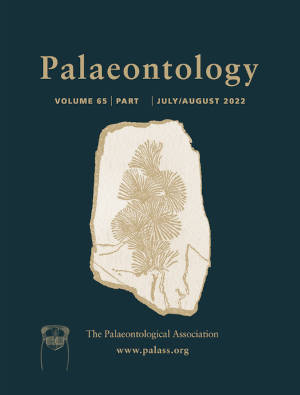Article: How to date a crocodile: estimation of neosuchian clade ages and a comparison of four time-scaling methods
Publication: Palaeontology
Volume:
65
Part:
2
Publication Date:
2022
Article number:
e12589
Author(s):
Sebastian S. Groh, Paul Upchurch, Paul M. Barrett, and Julia J. Day
Abstract
Abstract Clade ages within the crocodylomorph clade Neosuchia have long been debated. Molecular and morphological studies have yielded remarkably divergent results. Despite recent advances, there has been no comprehensive relative comparison of the major time calibration methods available to estimate clade ages based on morphological data. We used four methods (cal3, extended Hedman, smoothed ghost lineage analysis (sGLA) and the fossilized birth–death model (FBD)) to date clade ages derived from a published crocodylomorph supertree and a new neosuchian phylogeny. All time-scaling methods applied here agree on the origination of Neosuchia during the Late Triassic or Early Jurassic, and the presence of the major extant eusuchian groups (Crocodyloidea, Gavialoidea, Alligatoroidea and Caimaininae) by the end of the Late Cretaceous. The number of distinct lineages present before the K/Pg boundary is less certain, with support for two competing scenarios in which Crocodylinae, Tomistominae and Diplocynodontinae either: (1) diverged from other eusuchian lineages before the K/Pg boundary; or (2) evolved during a ‘burst’ of diversification after the K/Pg event. Cal3 and FBD proved to be the most suitable methods for time-scaling phylogenetic trees dominated by fossil taxa. Extended Hedman estimates are substantially older than the others, with larger standard deviations and a strong sensitivity to taxon sampling and topological changes; sGLA has similar problems. We conclude that a detailed understanding of phylogenetic relationships, tree reconstruction methods, and good taxonomic coverage (in particular the inclusion of the oldest taxon in each clade) is essential when evaluating the results of such dating analyses.
